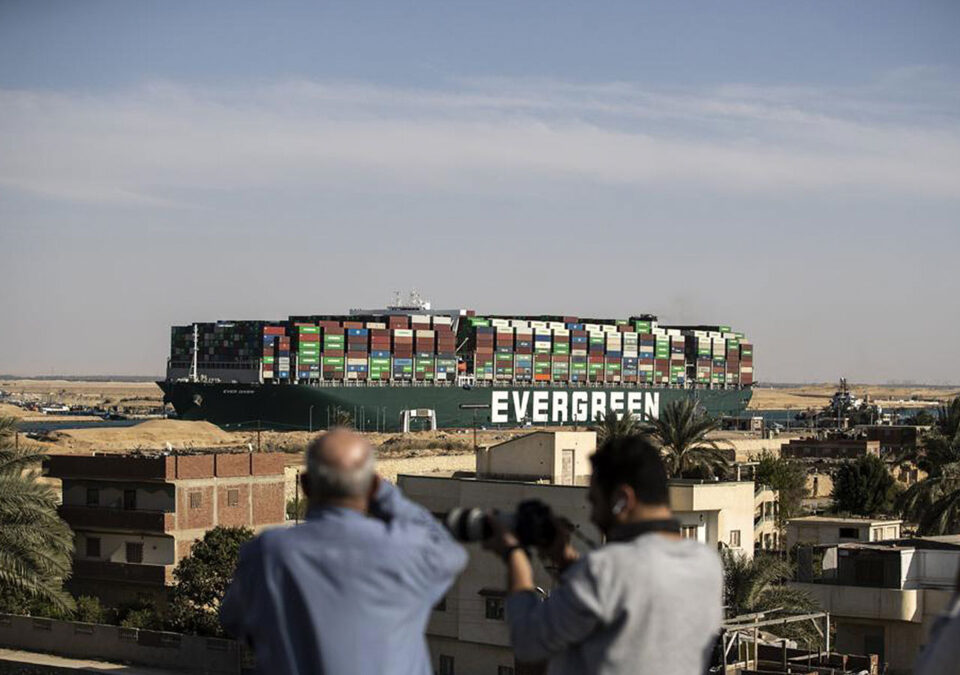When I first heard that a massive cargo ship had run aground and blocked one of the most important trade routes in the world, I thought it was bemusing and ridiculous. But as the Canal blockage drug on, the situation approached crisis proportions and was no longer funny. About 50 ships pass through the Suez each day, carrying 12% of global trade. Before the Ever Given was refloated this morning, over 300 ships were stuck behind it waiting for passage through the Canal, representing tens of billions of dollars of goods from furniture to frozen fish to liquified natural gas. A supply chain already under stress from the global pandemic has been dealt another huge blow.
There are important lessons investors can take from the Ever Given debacle that have nothing to do with cargo ships.
Lesson Number One: The Future Is Impossible to Predict
Morgan Housel, a financial commentator, tweeted: “’One container ship gets stuck’ did not show up in anyone’s 2021 global economic risks forecast.” So true, nobody predicted this accident or its far-reaching effects.
Another example is from 2011. An investment manager of international stocks our firm works with positioned their portfolios in early 2011 to overweight Japanese stocks. They saw them as relatively cheap and poised to perform strongly. Then on March 11, 2011, a major earthquake 80 miles offshore sent a 50-foot tsunami slamming into the Japanese coastline, causing the meltdown of the Fukushima Daiichi nuclear power plant reactors, the worst nuclear power disaster since Chernobyl in 1986. The Japanese economy suffered severely, and the disruption tanked the stocks in which our investment manager had invested.
The lesson—which we already know but should constantly remind ourselves—is that we can’t predict the future. Things will happen that are entirely outside the scope of what we expect. I have a friend who is a concert promoter. Prior to the pandemic, his business was booming; now it is dead. Another friend’s company was chugging along with single-digit growth until the pandemic hit; demand for their main product which relates to take-out food has increased ten-fold.
Lesson Number Two: Inductive Reasoning Can Blind Us to Risks
About 20,000 ships a year navigate through the Suez Canal. According to Bloomberg, there have been 75 shipping incidents in the Canal over the past decade, including other groundings. That’s a tiny 0.04% accident rate, and nothing has blocked the Canal or caused this level of disruption.
That an accidental blockage had never occurred blinded us to the possibility that it might. To extrapolate past trends into the future is known as inductive reasoning and, while it’s a necessary part of how we make decisions, it is inherently flawed.
Here’s an example:
- PREMISE: My dog has floppy ears
- PREMISE: My neighbor’s dog has floppy ears
- PREMISE: My brother’s dog has floppy ears
- PREMISE: My friend’s dog has floppy ears
- ONCLUSION: All Dogs Have Floppy Ears
Obviously, after a mere four observations, we can’t really conclude that all dogs have floppy ears. But what if there were 400 observations of dogs with floppy ears? Or 4,000 or 4 million? Are those enough observations to conclude all dogs have floppy ears? No. The first time you meet a German Shepherd with ears that point up, all your prior observations are out the window. That is the problem with inductive reasoning—generalizations about the unobserved are made from the observed. Merely knowing what is possible doesn’t define what’s impossible. As author Arthur C. Clarke states in the first of his Three Laws: “If an elderly but distinguished scientist says that something is possible, he is almost certainly right; but if he says that it is impossible, he is very probably wrong.”
Lesson Number Three: Bottlenecks Need Contingengies
One of the top business books of all-time is Eli Goldratt’s “The Goal: A Process of Ongoing Improvement.” The book tells the story of a new plant manager and how he transforms his plant’s output by eliminating production bottlenecks. The book lays out what is known as “The Theory of Constraints.”
The saga of the Ever Given and its blockage of the Suez Canal has had me thinking about The Goal and bottlenecks. The Canal is a classic example of a bottleneck: it is 120 miles long and has a typical width of 200 – 300 feet. For most of the Canal ships can’t pass each other; there is a long dual-lane section in the middle that allows north and southbound convoys to pass each other.
Bottlenecks can be overlooked when everything is flowing through them freely. But they are sources of risk, and if something goes wrong, it can have far-reaching consequences.
The Suez Canal Authority knows full well it’s operating a bottleneck and opened the latest big improvement to the Canal in 2015. But it’s still a bottleneck, and to survive blockages, we all need contingency plans.
LESSON NUMBER FOUR: BE READY FOR GLOBAL SUPPLY CHAIN DISRUPTION
My wife and I ordered a new table lamp in October that finally showed up this week. Likewise, family members have received Christmas gifts in February and March that we ordered in November. In helping our daughter shop for furniture for her apartment we’ve found that our local IKEA is out of many items, and shopping there has become frustrating.
We’re in the third decade of the 21st century; we’re used to our store shelves being full and items we’ve ordered being delivered freaky fast. But the pandemic and now the Suez Canal accident have laid bare the fragility of the global supply chain. What if the pandemic had been worse? The case fatality rate for COVID stayed under 1%, but a rate a few percent higher would have necessitated much stricter lockdowns, and essential parts of the global supply chain might have collapsed.
Thanks to the information revolution, we can run much leaner supply chains today, with less material in warehouses and more in transit. That allows full shelves and fast delivery but leaves supply chains more vulnerable to shocks. Perhaps companies will decide to hold more buffer stock after the events of the last year, and perhaps as individuals, we should too. Any of us can wait for a lamp, but it’s a good idea to have a backup of essentials.
The main takeaway from the Ever Given blockage is to maintain a margin of safety in our personal lives, investment portfolios, and businesses. Often events that have a tiny chance of occurring generate the biggest problems. Rainy days can be forecast and prepared for, but tornados can devastate without warning. A fall on an easy ski slope can be calamitous, trouble in a small sliver of the mortgage market can cascade into a financial crisis, an unlucky series of events can cause a massive oil spill, a virus that is super contagious and spreads before symptoms appear can rock our world, and a ship buffeted by strong winds might shut down an eighth of global trade.



